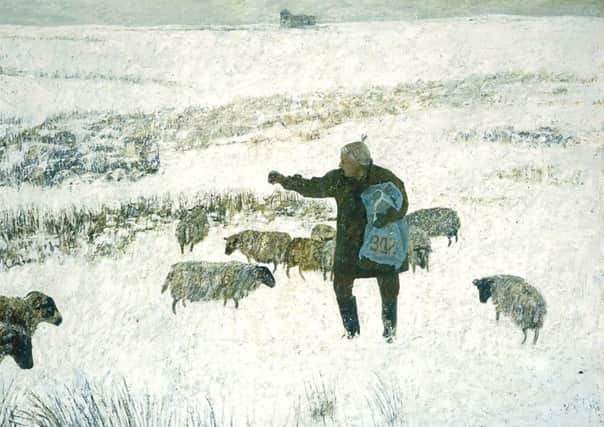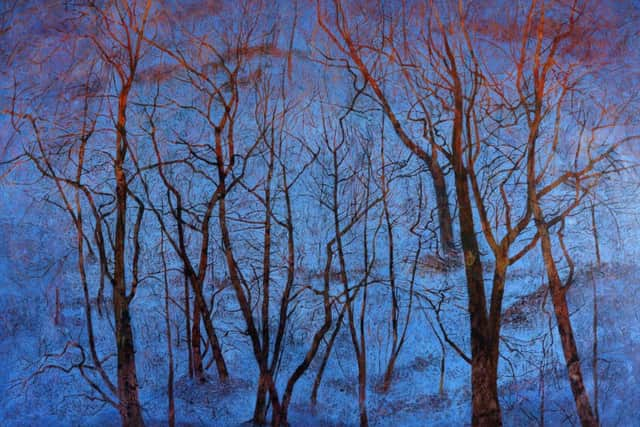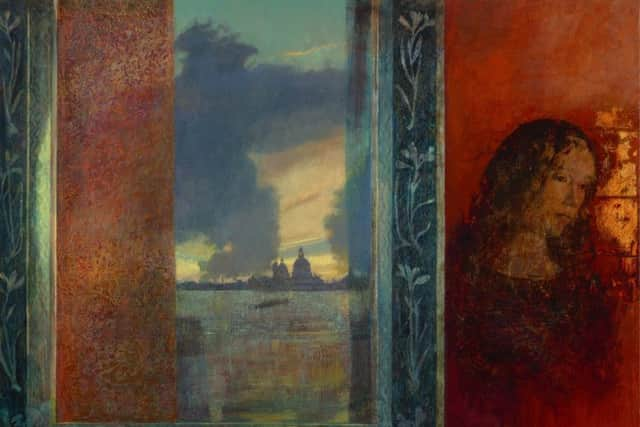Art reviews: Victoria Crowe: 50 Years of Painting | The Long Look: The Making of a Portrait


Victoria Crowe: 50 Years of Painting, City Art Centre, Edinburgh *****
The Long Look: The Making of a Portrait, Scottish National Portrait Gallery, Edinburgh ****
Advertisement
Hide AdAdvertisement
Hide AdVictoria Crowe has grown steadily in stature as an artist and happily also at the same time in public recognition. Her major retrospective at the Edinburgh City Art Centre, Victoria Crowe: 50 Years of Painting, with 150 works on show, is timely therefore. She came to Scotland in 1968, invited to join the staff of Edinburgh College of Art by Robin Philipson who had spotted her work at the Royal College Degree show in London. Since 1970 she has shown regularly at the Scottish Gallery, but although she also won a number of awards over the intervening years, her reputation didn’t really reach a wider public till 2000 when A Shepherd’s Life, a collection of her paintings of the Pentlands shepherd, Jenny Armstrong, was shown at the Scottish National Portrait Gallery. This beautiful group of works is well represented here. They reflect, not only Armstrong’s life, however, but also that of the artist and her family for the shepherd was their next door neighbour; this was their environment too.


When they arrived in Edinburgh in the summer of 1968, looking for somewhere to live, Crowe and her husband Mike Walton drove out south west along the A702 which runs high up under the Pentlands. They found a place to rent a few miles out. Later they moved to Kittleyknowe near Carlops, where Armstrong was their neighbour, and then to West Linton where they now live. The Pentlands have been in Crowe’s art ever since and her evolving relationship with their landscape is clearly seen in the Shepherd’s Life paintings. Snow is frequent in that high country and these paintings, unless they are of the cosy, cluttered interior of Jenny’s cottage, are almost always set in winter. The most familiar image, Large Tree Group, made into a tapestry by Dovecot Studios, shows Armstrong walking alone through a white, snowy landscape beneath a stark winter tree. A rare painting of summer, Back Garden in Summer, indirectly suggests the greater appeal of the austere winter hills and bare trees.
The Shepherd’s Life paintings are not simple landscapes however. They are about a landscape that is lived: the almost ascetic dedication of the shepherd and the detailed intimacy of her relationship with her environment. It is this interweaving of life and landscape which gives her pictures such appeal. Rosa Proprina and the Pentland Hills, a key early work, already shows the way she was to go. It is a painting of the winter hills with a drawing of a woman’s head by Modigliani drifting over them. The head is an emanation, a spiritual presence, but it also suggests how we are part of the landscape even as we see it. You cannot simply paint what is out there, but what is in here, too.
When in 1992 Victoria first visited Italy she found something similar there too in the landscape, but also in the art. Her painting became literally more reflective, incorporating mirrors and windows, reflective surfaces that allow images to drift between levels of reality. This happens in November Window Reflecting where a tall lily, her own self-portrait and other things are brought together by reflections in the windows of her home in West Linton. Italian paintings or places are frequently invoked in this way, but her work also becomes additive. Thus in Fragile Traces, Venice, she uses collage and layered textures to suggest different depths and so levels of awareness: how past and present, memory and feeling, can all colour and inform a present perception; and that may itself, as in the Venetian wall that inspired this picture, already be a palimpsest, a witness to the passage of time.
In 2003, Victoria and her husband acquired a studio in Venice. It is a city of reflections and so provided an environment beautifully in tune with her art. Paintings of the city like Morning, Reflections Across the Water, for instance, or Zattere, Looking into the Evening Sun, can more than hold their own in the crowded field of paintings of Venice.


In Thoughts on the City she draws Venice’s complex skyline apparently effortlessly and at a single take. Drawing underlines everything she does. That makes the display of some of her sketchbooks a special pleasure. It also underlines how her art is rooted in experience; how as observation becomes image, the thing seen is also the thing felt. This is wonderfully present in the series of beautiful paintings of trees in evening sun, at dusk, or even in near darkness that have been such a striking theme in her work in recent years. The Shortest Day, Bare Trees, Blue Snow, Landscape with Hidden Moon are lovely examples. Though iconographically simpler than some of her other paintings, these are nevertheless not just landscapes, or if they are it is in the way that Caspar David Friedrich paints landscape as a vehicle for complex thoughts and feelings. These pictures are winter scenes again, but with fiery light striking through encroaching darkness, the moon silhouetting the trees, or simply a tree seen against the sky at the winter solstice, these are still pictures about time, mood and memory. Altogether this show represents a remarkable achievement, 50 years of richly diverse painting with nevertheless a profound consistency.
If drawing is a key element in Crowe’s exhibition, it is also half the story in The Long Look. This interesting and unusual show at the Scottish National Portrait Gallery partners the painter Audrey Grant with the photographer Norman McBeath. She has drawn him in charcoal while he has photographed her, or at least he has photographed her materials, her paint covered easel and shoes, her palette knife and her drawing charcoal and other paraphernalia in her studio, but never actually the artist herself, except for one striking picture of her charcoal-blackened hands. All the other images are photographs, but this is a photogravure, a photographic intaglio print. There are beautiful photographs of the elegant sticks of willow charcoal that she used for the drawing, intact before use, and shown alongside the actual stubs, bagged and labelled as they were left over from each stage of the drawings. They invoke the presence of the artist and indeed her sitter, the photographer, but only ever by inference.
Advertisement
Hide AdAdvertisement
Hide AdGrant’s two portraits of Noman McBeath and a further two of crime writer Val McDermid are also very much about process and if they are not actually indirect, they are nevertheless ultimately unresolved. The 20 or 30 stages that the portraits went through are recorded in photographs, but although there are constant changes, there is no resolution, no apparent reason for any one being any less final than the one eventually chosen as the last. The effect is more a kind of performance than portraiture in any conventional sense. Her chosen medium is charcoal. It doesn’t really lend itself to extensive working, yet that is how she has approached it, attacking her paper, constantly rubbing out and scraping back, going round and round the point of resolution, but never reaching it. The result is a tangle of lines and shadows. Like McBeath’s photographs of her, the portraits are a suggested presence, not a likeness. Her drawings are reminiscent of Giacometti whose images shimmer in an existential haze, present, but never fixed, but where portraiture is the professed aim, you do feel it might all be a little more resolved.